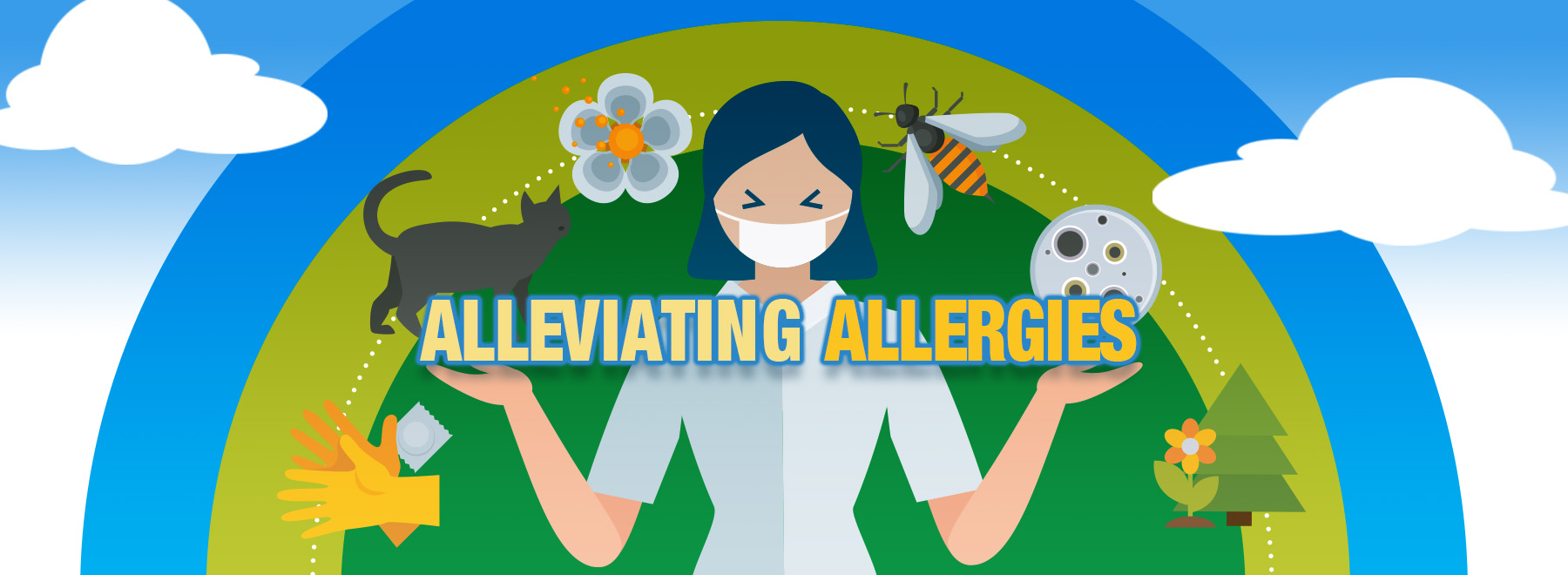Seasonal symptoms insufferable? Try these tips
Note: This story appears in the March 2019 edition of CONSULT, the monthly e-newsletter published by the UMMC Division of Public Affairs that focuses on cutting-edge clinical advances, innovative educational programs and groundbreaking research occurring at UMMC. To receive CONSULT in your email, visit www.umc.edu/CONSULT to sign up.
When it comes to decreasing your misery in Mississippi’s year-round allergy season, remember what your grandmother said: An ounce of prevention is worth a pound of cure.

So says Dr. Gailen Marshall, professor and R. Faser Triplett Sr. Chair in Allergy and Immunology at the University of Mississippi Medical Center.
“Your grandmother was correct,” Marshall said. “If you can prevent hay fever and allergic asthma, you will do a whole lot better than if you try to treat it when you get sick.”
What often happens to allergy sufferers:
“If you have allergy symptoms and are exposed to things you are allergic to, and you wait because you don’t think it’s too bad, you could have an explosion of symptoms, such as watery eyes, running nose, cough and sneezing,” he said. “You are absolutely miserable.
“This can happen in a dramatically short period of time, but it didn’t happen with just one excursion to the mailbox in allergy season.”
He advises allergy sufferers to get ahead of the symptoms by recognizing their allergy triggers, then taking action to do what they can to avoid them.
Some examples:
• In early spring, you’ll see lots of pine pollen on your vehicle’s windshield, “but it’s not nearly the big problem,” Marshall said. Instead, he said, don’t forget to minimize exposure to pollen from oak, maple and hickory trees.
• In a 24-hour cycle, “pollen is absolutely highest around daybreak,” Marshall said. “So if you know that and like to go for a morning run, the pollen will be a lot higher than at 5 or 6 in the evening. Just shifting the time that you run in and of itself can be helpful.”
• Bathing a dog – or even more challenging, a cat – “can be done very readily, but doing it with regularity can reduce significant dander and take something out of your symptom bag,” he said. “It can’t eliminate it, but it can lower it.”
• Many people who cut their grass enjoy the earthy smell that accompanies it, but “it’s not really the grass. It’s the mold in the ground, and spores get thrown up in the air when the grass is cut,” Marshall said.
Make a habit of wearing a mask with a good filter when mowing or being around freshly cut grass, and “minimize exposure. Don’t go out in it for about two hours after it’s cut so that you’re not breathing in heavy amounts.”
Even those who do a good job of avoiding triggers may need medications to keep their allergy symptoms in check.
“The gold standard for treatment of allergic rhinitis is corticosteroids,” Marshall said. “People get worried because they think of all the side effects, but what we are talking about is glucocorticoids. It’s not what athletes take on the sly to build up their muscles. They are topical and can be bought over the counter as nasal sprays.”
Just remember that such medications are pretty short-acting, and “you must use them every day, or else don’t expect it to do any good,” Marshall said.
Another common medicinal treatment is a good non-sedating antihistamine.
“They are a little bit more expensive, but they are a lot safer and more effective,” he said. Consider purchasing a generic non-sedating antihistamine that comes in liquid, capsule or tablet form. They are easy to swallow, Marshall said.
As your allergies kick up, “you can’t prevent 100 percent of the symptoms from developing,” Marshall said. But by thinking ahead, he said, you can keep the misery to a minimum.



